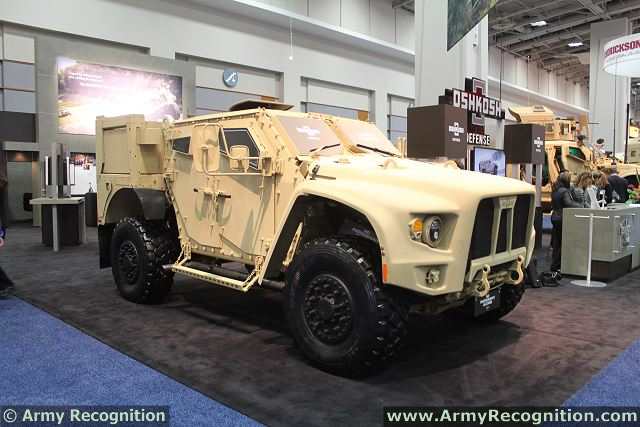Breaking news
Despite budget cuts no change for JLTV Joint Light Tactical Vehicle for U.S. Army Marines 2910134.
| a | |||
Defence & Security News - United States |
|||
| Tuesday, October 29, 2013 11:24 AM | |||
Despite
budget cuts no change for JLTV Joint Light Tactical Vehicle for U.S. Army
and Marines. |
|||
| Despite
budget cuts, furloughs, sequestration, continuing resolutions, ongoing
changes in force structure, and a government shutdown, both the Army and
Marine Corps are committed to buying the same amount of Joint Light Tactical
Vehicles they initially set out to purchase. The Joint Light Tactical
Vehicle, or JLTV, is designed to replace the Humvee, and to bring additional
capability to both the Army and the Marine Corps. It is lighter and more
mobile than the mine-resistant ambush-protected vehicle, but it also provides
more survivability than the Humvee. |
|||
 The three competitors for the US Army and Marine JLTV program, Lockheed Martin, AM General and Oshkoh Defense. |
|||
| The Army expects to buy 49,000 of the vehicles, while the Marine Corps expects to buy 5,500. Col. John Cavedo, manager of the Joint Program Office for the JLTV, said even as the Army changes in size due to end-strength reductions, and the force structure changes as a result, the Army will still want the same number of vehicles. "Reductions to match the force structure would come at a reduced number of 30-year-old Humvees," he said, indicating that the Army expects to buy all 49,000 JLTVs, and will simply eliminate Humvees more quickly than expected. Marine Corps Lt. Col. Mike Burks, deputy manager of the Joint Program Office for the JLTV, said the same. "Let me be clear on the front of Marine Corps commitment to JLTV: We are in," he said. "Right now, in the current conversation, in the context of the size the Marine Corps is looking at, 5,500 JLTVs is good enough to meet deployed commanders critical mission needs in the Marine Corps' most dangerous combat mission profiles." There are currently three defense contractors in competition to be named manufacturer of the JLTV for the Army and Marine Corps. Those competitors are Oshkosh Defense, Lockheed Martin, and AM General. AM General manufactured the Humvee. In August, each of the three manufacturers delivered 22 of their vehicle prototypes to the Army and Marine Corps for testing. A total of 66 vehicles in all were delivered. Today, those vehicles are spread out across multiple sites for testing. |
|||
Kevin
Fahey, Program Executive Officer for Combat Support and Combat Service
Support, said the JLTV program is, despite some budget issues, largely
on schedule.
"Everybody has been on schedule or ahead of schedule," he said. "The perturbations we've had have all been driven by budget and continuing resolution authority. The hardest part of what we are going through is not knowing." Fahey said that the recent government shutdowns had an unusual impact on the JLTV program. While the program had prior-year funding available to continue testing on the vehicle, the funding doesn't cover the operating costs for the sites where the testing actually occurs. "The proving ground was basically shut down," he said. As a result, testing had to stop on the vehicles. When the government came back on line, the testing program was not able to start back up as quickly. "Starting back up has been a very difficult proposition," Fahey said. The stoppage of testing during the shutdown, plus the slow restart, has delayed JLTV testing somewhat, he said, but at this point it is not significant. "We are behind our current ideal plan, but that doesn't mean we are behind our macro schedule," he said, adding that the program office is looking daily at how it can make up for that schedule slip over the course of the next nine months. "We are pretty confident we can do that." |
|||
Right
now the JLTV is funded by a continuing resolution that ends in early 2014,
the second quarter of the fiscal year. Fahey said the program is on track
now, but definitely by the third quarter of the fiscal year, a confirmed
budget decision will need to be in place.
"The JLTV is one of those programs where if we don't get a budget approved it will impact the program," he said. Cavedo said that for now, he's operating as though funding will arrive when the continuing resolution ends, and he thinks the JLTV program will continue to stay on track. "We are planning for success here, and we are going to keep the train on track for as long as we possibly can keep it on there," he said. "Some really hard decisions are going to have to be made in the second quarter, mid-second quarter of this (fiscal) year. And from where I sit, I certainly hope that for JLTV, the hard decision is to keep it on the tracks. But that may not be what the Army decides." Fahey,
Cavedo and Burkes spoke Oct. 22, during a press conference at the 2013
Association of the United States Army Annual Meeting and Exposition, in
Washington, D.C. |
|||






















